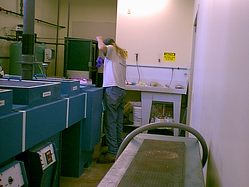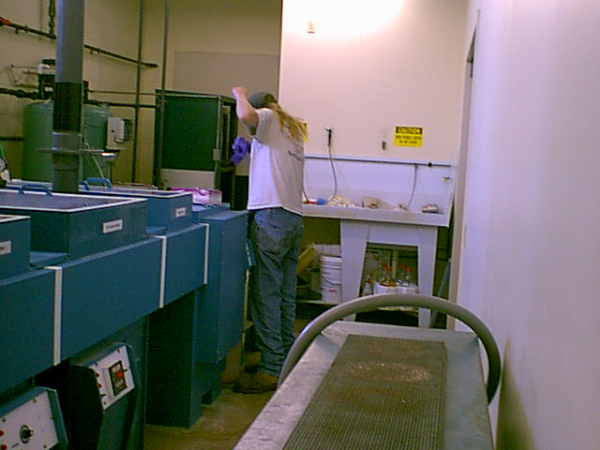Eight Reasons Why You Don't Want DIY Photo Etching
We get regular inquiries asking about buying etching equipment. There seems to be a perception that an etching machine is like a photocopier: buy it, plug it in and youre in business. Setting up a photo etching operation is a much bigger deal than that. At a minimum, there are six pieces of capital equipment required: cleaning line, laminator, exposure unit, developer line, etching line and stripping line. You also need to be able to mix, transport, use and get rid of 5 different solutions: cleaner, developer, etchant, rinse and stripping solution. And, if you are going to do this right, youll need a water conditioning system, a waste water treatment plant and a fume scrubber.
I dont know if there is anywhere in the country that you could set up and operate a new etching facility without having to conform to a multitude of state and local environmental compliance requirements. None of which are cheap.

In addition to shouldering the costs of the regulatory and environmental burdens, photo etching equipment is not a long-lived asset. Exposure to the etching solution, which is both heated and pressurized, takes its toll on the conveyors, bearings, and pumps. We routinely replace equipment every four years. If you are etching only part time, or intermittently, your etching equipment is degrading in place.
There are eight more reasons why you should be working with a commercial photo etching supplier rather than doing your chemical etching in house:
1. Utility Costs: chemical etching equipment uses a ton of power to run compressors, pumps, heaters, conveyors and sprayers. The etching process also uses a lot of water for regeneration, rinsing, developing and stripping.
2. Chemistry and supply costs: Etchant, developer, stripper and photoresist are significant elements in the cost of goods. And, if you are not etching on a continuous basis, those costs are not amortized efficiently.
3. Waste treatment and disposal: Even with on-site waste treatment, what and how much can be put down the drain is tightly regulated. Other wastes must be processed by regulated facilities and everything has to be accounted for and documented in perpetuity.
4. Regulatory and compliance costs: It's not enough to follow the rules. You have to pay permit fees, audit fees, consulting fees, disposal fees and more, just for the fact of using photo etching as a manufacturing process. And, don't forget the potential for fines if you have a problem.
5. Maintenance and repair costs: Photo etching equipment requires regularly scheduled M&R, just like an airplane. After every so many hours of operation, there are parts that need to inspected, serviced or replaced. Keeping an etching line running for 4 years isn't like keeping a copier plugged in.
6. Capital Expenses: After keeping an etching line running for four years, you still have to replace it. Just write a check in the six-figure range.
7. Training and Safety: There are state- and federally-mandated safety training requirements for which a certified instructor is required. Every new employee must be trained to the requirements and every employee must complete retraining annually.
8. Determining your true cost of goods: Do you really know what your etching costs are? It's not just the cost of the metal. What about the defective parts you make? What about unabsorbed overhead?
When you work with a commercial etching facility, all you are paying for is the parts you need.
To help you make the comparison, download our FREE report on Photo Etching Costs:



